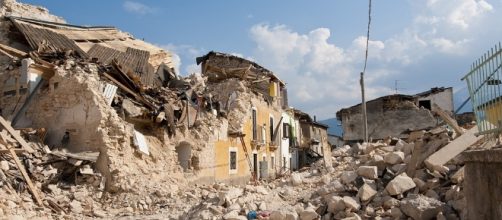Flags are being flown at half mast in Mexico on Saturday, September 9, out of respect for the dead. Mexico’s President Enrique Peña Nieto has declared a national day of mourning, even as search and rescue efforts continue. Friday's earthquake was the most powerful anywhere in the world since September 2015 and injured about 200 people. Mexico's poorest states of Chiapas, Tabasco, and Oaxaca were hit hardest and several of those affected are now homeless. 100 extra police officers and rescue dogs are combing the Juchitán area, where many buildings were destroyed.
Working to restore vital utilities
President Peña Nieto said his people are of prime concern and helping them is critical. He confirmed that authorities were working to re-establish food, water and electricity supplies. Tens of thousands of emergency packs have been sent to Oaxaca and medical attention is being provided to those in need. Mexico's Interior Department confirmed that 428 homes were destroyed and 1,700 were damaged in Chiapas. Human rights officials said many of the homes were made of clay and wood and could not withstand heavy rains and winds.
On Friday, several people dragged mattresses onto sidewalks, as they prepared to spend the night under the stars. More than 250 aftershocks were felt after the earthquake and many people feared their homes would collapse.
62 deaths have been confirmed so far: 45 in Oaxaca, 12 in Chiapas, four in Tabasco and one in Guatemala. The earthquake was the strongest in Mexico in about 100 years. Approximately 9,500 people were killed by a magnitude 8.0, in and around Mexico City, in September 1985.
Fears dissipate over Katia
Katia, which had strengthened from a Tropical Storm to a Category One Hurricane on Friday, has since been downgraded.
On Saturday September 9, it made landfall north of Tecolutla in Veracruz state, battering the region with intense rains and winds.
The U.S. National Hurricane Center said Katia's maximum sustained winds had dropped to 75 mph and it was weakening. Officials said Katia was hovering over Mexico’s Sierra Madre mountains, where mudslides and flooding were expected.
Before it departs, Katia is forecast to dump about 10 to 15 inches of rain on the region.
On the other hand, Katia's counterpart Hurricane Jose remains a dangerous Category 4 storm. Forecasters say it will pass over the Leeward Islands later on Saturday, and cause heavy winds, rain, and flooding. The Caribbean islands of Anguilla, Saba and Sint Eustatius that already experienced Hurricane Irma, are back under a tropical storm warning.
Warnings also remain in effect for Saint Maarten, St. Martin, and St. Barts. Barbuda, which was completely destroyed by Irma, is also expected to feel the wrath of Jose. The Red Cross in Antigua and Barbuda has described Barbuda as "a tropical ghost town of broken buildings and fallen trees". Its President Michael Joseph, said “It’s uninhabitable. I would literally say that 100 percent of the infrastructure is gone. Light, water, communication, it’s a total blackout.”


